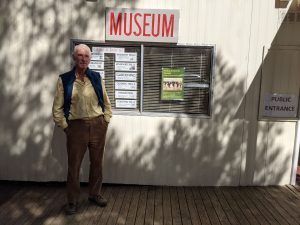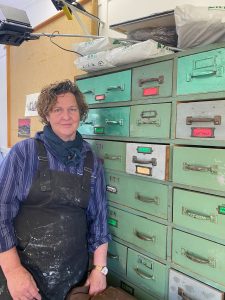Canberra’s magnificent seven
 By JANE DUNNET
By JANE DUNNET
THE National Carillon rings out from Aspen Island each week. It has been kept alive for 40 years by Canberra’s magnificent seven carillonists, but who will carry on the tradition in the years to come?
Will the bells soon fall silent?
This year marks the 40th birthday of a true cultural icon, the National Carillon. It’s the enormous instrument which comprises 55 bells ranging from weights of seven kilograms to six tonnes and sits on Aspen Island.
Twice a week the hauntingly beautiful sound of the Carillon resonates around Lake Burley-Griffin, played by the seven carillonists who take it in turns to make the music Canberra hears.
There’s no denying the Carillon’s uniqueness – technically there is only one other in Australia – so it’s inevitable that dedication is needed to keep this national treasure alive.
But since 2008 when funds were drastically cut, the Carillon has been under threat of becoming a mere ornament to be seen rather than heard, much to the despair of the few local Carillonists. And what happens when the time comes for the musicians to call it a day? After a successful 40 years of music, it’s time to consider who will be the future of the Carillon.
Who’s keeping the Carillon alive?
There are only seven carillonists in Canberra and between them they play the Carillon twice each week. They have been playing for quite some time and are all over 50.
National Carillon Society president Lyn Fuller says carillonists are a particularly passionate kind of musician.
“When someone learns the carillon and decides to stay on, they stay…We just play it with a passion”, Ms Fuller says.
Veteran George Howe epitomises this tradition. At 86 years of age he still plays regularly and with the enthusiasm of a budding musician.
Having played for over 30 years, Howe has been with the National Carillon for almost as long as the Carillon itself has been here.
As Ms Fuller says, “He’s been with the carillon since the 1970s, so he’s grown with it”.
Howe began playing in 1977 after answering a newspaper advertisement.
“It’s taken up a large part of my life, over 32 years”, says Howe. “It’s a very exciting instrument to play, because it’s unique in Australia”.
This year he was honoured with an Order of Australia Medal on the Queen’s birthday weekend, a tremendous achievement after years of dedication.
While Howe embodies all that the National Carillon means to Canberra, he also serves as a reminder that some new talent is needed for the survival of the instrument that is so important to Canberra.
Why is the Carillon so important?
On April 26, 1970 the National Carillon was given to Canberra as a gift from the British Government to commemorate Canberra’s 50th anniversary as the national capital. Queen Elizabeth II accepted the gift on behalf of the country.
The iconic structure is historically significant and rare. With only one other carillon in Australia – the other is at Sydney University – it’s definitely a “boutique” kind of instrument, as Ms Fuller describes it.
To qualify as a carillon it must have a minimum of 23 bells – Canberra’s has 55. The bells range from the very small to large and the decibels are likened to those of a jet engine when up close. The music flows out across the lake and over Canberra.
Carillons are also the heaviest instrument, which helps to explain why there are only about 700 in the world.
The National Carillon is listed on the National Capital Heritage register and is worth preserving for its cultural and historical significance. Whether you’re jogging past it or picnicking next to it, there’s no denying it’s a special instrument which our capital city is lucky to have.
What is the future of the Carillon?
In 2008 with the transition to the Rudd government, the National Carillon’s funding was cut by 35%. Since then the Carillon has not been receiving the financial support needed to reassure the carillonists that there is a future for the instrument.
Ms Fuller’s fear is the carillon will not receive enough money to be maintained as an instrument and will become a silent tower. The seven carillonists have since been working to have the government funding raised to ensure a future for the heritage listed carillon.
But who will be the future of the carillon?
Occasional lessons are given by Timothy Hurd, world class Carillonist and director of the National Carillon, although such lessons are scarce because he’s based in New Zealand. Hurd is one of the seven carillonists who play locally and his skills are greatly admired.
Other than these rare visits, the art of carillon is not taught anywhere in Australia, as much as the current carillonists would like it to be available for study.
The seven carillonists are working on a project to bring carillon composing to the attention of tertiary music composition students in Sydney and Canberra in the hope that it will interest some new talent.
Ms Fuller would particularly like to see some Australian students write for the carillon, “because they will become Australia’s future composers”.
As for the present, however, we can depend on Ms Fuller, Howe and their fellow carillonists to continue filling Canberra with music for as long as possible.



Be the first to comment!